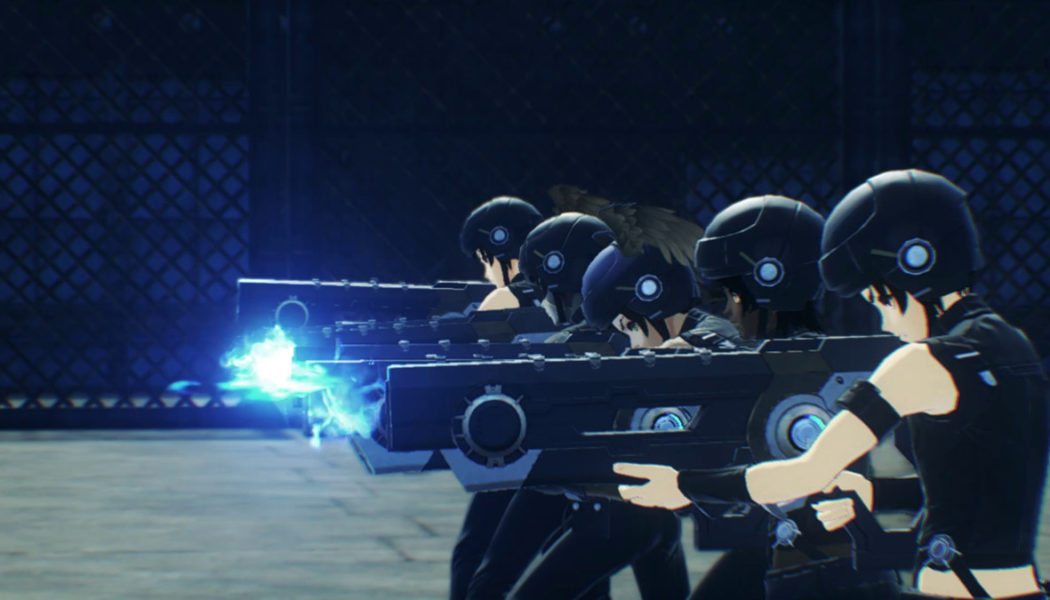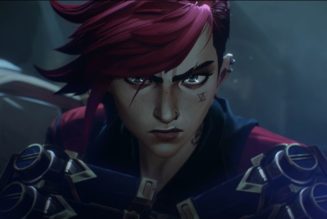Xenoblade Chronicles 3 is the perfect game to get you through the annual summer drought of video game releases precisely because it is a game that seemingly goes on forever. By the time you finish it, it’ll be well into November, just in time to pick up Game of the Year shoo-in Skull and Bones or whatever little game Sony Santa Monica’s got going on that will surely be of no consequence whatsoever.
I’m not even sure the game can be finished because, at 25 hours in, it’s still throwing new mechanics and tutorials at me that increasingly complicate an already complicated game. That said, I’m strangely compelled by its combat, which makes it feel like an MMORPG, and its nigh-incomprehensible story. Half the time, I don’t know what’s going on, mechanically or narratively, but I’m enjoying it.
Let me disclose two things up front. Firstly, I haven’t finished this game. It’s a JRPG; those things take upward of 60 hours to complete. And even with the wealth of time Nintendo gave us — a luxurious full month — it’s just not enough. I’m only 25 hours in with an untold amount to go. Secondly, I’ve never played a Xenoblade game before. I’m a Final Fantasy girl, and the Xenoblade series came at a time when my tastes in JRPGs had long been calcified.
Knowing all of this, it’s possible my attitudes about the game might change once I hit the 50-hour mark. The game might, at long last, stop introducing me to new mechanics every three hours, allowing me to finally figure out how combat’s supposed to fit together. And the game’s story may finally start answering the many questions it has so far seemingly refused to acknowledge it’s even asked. So while this isn’t a formal review, it’s a good encapsulation of how the first half (third?) of the game has left me feeling.
XBC3 starts off the same way my favorite Final Fantasy (VIII) does: with some good old-fashioned child soldiering. Noah and his team of Kevesi special forces have trained since birth to fight the opposing forces of the Agnus, and the game opens with a very “war is hell” montage of teenagers on both sides fighting and dying on a brutal battlefield. Over time, he’ll come to be allied with Agnian forces, and together, the group will hopefully save the world.
:no_upscale()/cdn.vox-cdn.com/uploads/chorus_asset/file/23898863/Switch_XB3_Direct_Story_ENG_SCRN_012.png)
I’m most impressed by XBC3’s combat. It’s really difficult to make RPG combat compelling these days. It’s either turn-based like the days of yore or a hyperfast button masher with no more strategy than “keep hitting X until somebody dies.” But Xenoblade feels like the closest a single-player game has gotten to MMORPG combat. You and your allies can assume one another’s classes and learn new classes from the characters you meet. Your allies learn their skills that you can use in addition to your own to create combinations that synergize really well, leading to massive advantages in battle.
There’s an elaborate process for afflicting enemies with status effects. In order for you to, say, stun a target with daze, you must first afflict them with break then hit the broken target with topple. It’s rare for a character to have the ability to inflict all three, so if you equip your allies with abilities that break, topple, and daze opponents, the AI will automatically use them in sequence to do so.
XBC3’s combat also has an interesting importance placed on positioning. During big boss fights in MMOs, you never want to be directly in front or directly behind an enemy since they traditionally have abilities that cause extra damage to players in those areas. There’s also a long-standing nugget of MMO wisdom that dictates you should not stand in area debuffs and instead stand in area buffs. In Xenoblade, characters have abilities that do extra damage or trigger certain statuses if they’re used when standing in a certain position. Characters also have abilities or auras that buff allies when you stand in them. In practice, this means, just like with my Astrologian in Final Fantasy XIV, I’m positioning my ass off, working my character to stand in as many buffs as possible for maximum output.
For as much as I enjoy combat, beyond positioning, the mechanics make no sense to me. There are icons under abilities that are never explained and do not have an entry in the game’s byzantine tips section. There are ways to chain attacks together (which is unhelpfully called “cancelling attacks”) that I never quite got the hang of. You have to start one attack as the previous one lands for a minor boost in damage, but the timing seems finicky. Combat is chaotic on its own, and trying to play a rhythm game as you’re dancing around enemies is asking a bit too much.
Chain attacks, though, are the worst. When you’ve filled a special meter, you can trigger a chain attack for massive damage, making them critical for boss fights. Chain attacks take you out of the battlefield into a separate screen where you can pick a special ability that, in order to execute, you must choose a sequence of smaller attacks to build up to 100 percent or more.
Initially, I didn’t think there was a strategy to it. I simply chose the attacks that made the numbers go up. The game throws so much at you so quickly, with jargon you haven’t really learned yet, that I clicked through the tutorial panels, eyes glazed over as I tried to absorb the sheer volume of everything everywhere all at once. As it turned out, there is a strategy to executing a chain attack effectively, but learning how is buried in the game’s combat training drills. In-game combat sims for learning game mechanics are a great resource and accessibility tool. But it’s a little stinky that some of the tutorials that are there aren’t experienced in the game itself, requiring you to sift through them like an instruction manual for an expensive coffee maker.
:no_upscale()/cdn.vox-cdn.com/uploads/chorus_asset/file/23898817/Switch_XB3_Direct_Battle_ENG_SCRN_08.png)
To add an additional element of combat to an already overloaded system, characters have the ability to fuse into beings called Ouroboros, granting them stronger attacks for a limited amount of time. Ouroboros have their own skill trees and abilities, and they even have a second form you can trigger, but, like with everything else in this game, it’s underexplained. I don’t see a reason to trigger my Ouroboros’ second form, and the game hasn’t yet conveyed to me a clear reason why I would choose one form over another.
Even though you have the ability to play every character who, in turn, has the ability to be every class, the one class that I’ve stuck to is healer. Your allies do not have the ability to self-heal. There are no items to restore HP or even to revive the dead — both are the sole domain of healers. If they go down, you will lose the ability to resurrect other fallen allies and a game-over usually follows. It’s just better to be in control of that personally, and the AI is decent at doing the hurty bits and blocky bits of the damage and tank classes anyway. It does significantly limit my gameplay options, but when my screen normally looks something like this:
:no_upscale()/cdn.vox-cdn.com/uploads/chorus_asset/file/23899488/2022072222392300_A862246CB76B2B6DC14022F4545399F5.jpg)
…being limited doesn’t seem so bad. I appreciate that XBC3 has attempted to differentiate itself from other RPGs with its combat. But with too many mechanics to keep track of that are inadequately explained and buried in a tutorial section that would require an additional 10 hours to parse, sometimes less is more.
Above all else, a game’s story is what matters to me. XBC3’s story is intriguing enough to keep going, but it feels like the game keeps adding breadcrumbs of plot with no gingerbread house payoff waiting for me at the center of the forest. This isn’t and can’t be a serious complaint given the sheer volume of game that I assume is left to me. But at this point, I feel I should have a basic understanding of what the characters want to accomplish.
As Noah and his friends continue to “Fortunate Son” their way through the game, they meet a creature they’ve never seen before: an old man. This old man tells them that there is more to life than fighting and dying at a young age, sacrificing their life energy to power their colony’s “Flame Clock.” Noah befriends a group from the other side of the war, and together, they learn that by smashing colonies’ flame clocks, both groups can save their respective sides from the endless cycle of war and death.
I would expect that to be the main thrust of the story, but the way it’s presented makes it seem incidental to the real focus of the plot, which is “make your way to the big sword statue that’s featured on the box art.” I get that the “big sword statue that’s featured on the box art” is key to Xenoblade lore, but the liberation of your allies and enemies seems far more compelling than “go here.”
On top of that, there is a cabal of armored enemies who control the colonies like pieces on a chessboard. Their motivations are as yet unknown, and they count among their ranks former allies of Noah who were thought to be dead. If that weren’t enough, I was just introduced to an even shadowier cabal of villains who are controlling the people who control the colonies. It’s too much.
:no_upscale()/cdn.vox-cdn.com/uploads/chorus_asset/file/23898824/Switch_XB3_Direct_Field_ENG_SCRN_028.png)
I do appreciate how every character gets a moment to shine. Each person has their own motivations and backstories the game takes time to thoughtfully flesh out and weave sensibly into the narrative in a way other RPGs neglect in favor of hyperfocusing on its chosen-one protagonist. (Pick a Final Fantasy, any Final Fantasy.)
I also really dig how the game depicts the complexities of relationships between people who have hurt each other. The characters you control have fought against one another. Though they’ve been forced together by circumstance, it takes time for them to trust one another. And though they’re helping other enemy colonies, those people rightfully call out that the good they’re doing now doesn’t erase the pain they’ve inflicted on others in the past.
As much as this game confuses me, I’m content to let it string me along babe-in-the-woods-style. Like I said, it’s still early in the game. I’m hoping all the disparate pieces of story and combat are being constructed like an elaborate Rube Goldberg machine that will start to make sense once I reach the game’s climax. Xenoblade Chronicles 3 is like that quote from detective Benoit Blanc in Knives Out: “It makes no damn sense. Compels me though.” It’s a byzantine maze that’s as fun as it is bewildering to navigate, and I hope it doesn’t take too much longer for me to figure it out.
Xenoblade Chronicles 3 launches on the Nintendo Switch on July 29th.








